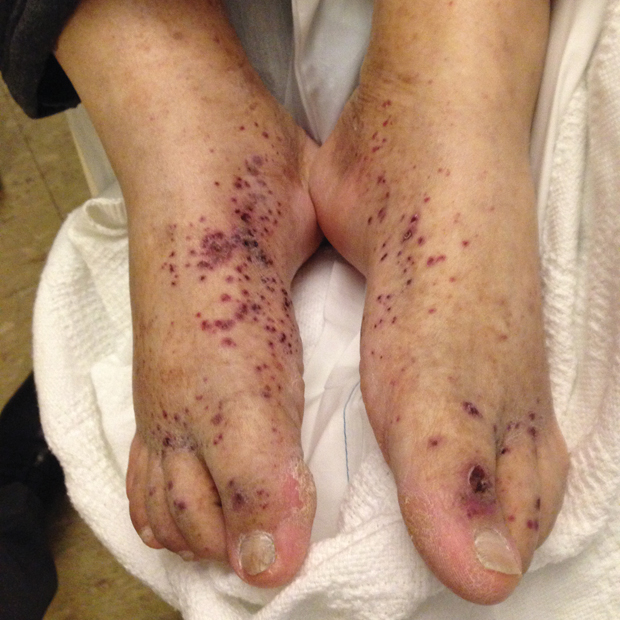Doctors with borders
What parameters determine ACP's responsibility to speak out on what is right and wrong, set guidelines, offer guidance, and articulate policy on behalf of internal medicine?
If you have not read “Osler Redux: The American College of Physicians at 100,” written by Charles S. Bryan, MD, MACP, and featured in The Lancet's May 2, 2015, issue, or if it has been a while since you last looked at this article, click the link above. It's a wonderful piece. Then return to this President's Message column, and I'll consider myself lucky.
It will be my pleasure to be able to consider with you what Dr. Bryan meant when he paraphrased the eminent sociologist and medical historian, Rosemary A. Stevens, PhD, MPH, who noted that internal medicine has, in many ways, served as a conscience for the medical profession at large. Conscience, of course, refers to a personal sense, or inner voice, signaling what behaviors are right and what are wrong.
So, if Drs. Stevens and Bryan are correct and internal medicine is, indeed, the conscience of medicine, and if the American College of Physicians, the largest and most powerful single-specialty organization in the world, is truly the voice of internal medicine, then we in ACP need to take quite seriously what we say.
And that brings us to ACP's borders. What are the borders within which the College has a responsibility to speak out on what is right and wrong, set guidelines, offer guidance, and articulate policy on behalf of our profession? Where does our authority begin, and where does it end?
This is by no means a simple question. The critical non-medical factors that influence health remind us of the breadth of internal medicine's borders, and the realization, with growing social awareness, of how far those borders have spread.
Remember the mnemonic you learned for categorizing the determinants of disease, DAMN IT, which stands for Degeneration or Developmental; Autoimmune; Metabolic or Mechanical; Nutritional or Neoplastic; Inflammatory, Infectious, Ischemic, Inherited, Iatrogenic, and Idiopathic; and Trauma or Toxins. Not a great mnemonic; there's way too much to remember. Better is VINDICATE: Vascular, Inflammatory, Neoplastic, Degenerative/Deficiency, Idiopathic/Iatrogenic, Congenital, Autoimmune/Allergic, Traumatic, and Endocrine. Other mnemonics include VITAMIN C+D, but you get the point. We were, as medical students, biologically restricted in our determinations of disease. Now, as practitioners, we need to be much more socially minded.
A recent report from the Kaiser Family Foundation, November 2015, categorizes 27 social determinants of health into six categories—1) economic stability; 2) neighborhood and physical environment; 3) education; 4) food; 5) community and social context; and 6) health care system—and includes determinants such as income, parks, education, hunger, discrimination, and clinician linguistic and cultural competency.
This is not fluff; it is critical. Just as the most important advances in health care in the 19th and early 20th centuries derived from hygiene and public health, it will be progress made in the social determinants of health that will define the health of our population in the future.
We all have seen the data demonstrating per capita health expenditures in the U.S. as highest compared to competitor industrial nations, while our outcomes measures, such as life expectancy, are the lowest. Eric C. Schneider, MD, FACP, and David Squires, MA, in a recent editorial in the Sept. 7, 2017, New England Journal of Medicine entitled “From Last to First—Could the U.S. Health Care System Become the Best in the World?”, offer several explanations for our current state, including “… disparities and inequities in the delivery of care based on income, educational attainment, race or ethnic background, or other nonclinical personal characteristics.” There's not much here that would fit into DAMN IT, VINDICATE, or VITAMIN C+D.
If ACP is to fulfill its mission to enhance the quality and effectiveness of health care by fostering excellence and professionalism in the practice of medicine, and if the College is to be the voice of the specialty that is the conscience of medicine, then it must engage in policies, positions, and guidelines in areas that decades ago might have been considered out of bounds. ACP's wide-ranging public policy agenda is developed with the goal of advocating for what is best for patients and the profession. So, ACP has developed seminal public policy papers on climate change and firearm violence, advocated on behalf of health insurance for all, and issued statements for LGBTQ rights and against faith-based bans on immigration. These actions are not undertaken based upon social or political positions; they are put forth based on their direct effect on public health.
But here we need to question whether there is anything that does not, when followed out to full effect, impact health, particularly when one appreciates the connection between health, wealth, safety, and happiness. Does that mean that ACP is justified to comment on all social policy, every government action, or each political decision? Of course not. We have borders, and here is how our borders can be drawn.
For each domain under consideration, questions must be asked:
- Are there plausible data associating it directly with health outcomes? For climate change and firearm safety, yes, but for domains such as labor, defense, or international policy, to mention just a few, obviously, no.
- Will commentary by the College make a difference? We have numerous examples of ACP advocacy making a difference. But, indeed, there are many issues where commentary from the College will not likely bring about real change.
- Is this an area in which the College has expertise? Few organizations are as well versed as the College in matters pertaining to administrative burdens, quality measures, physician payment, etc. But so many other areas lie outside our realm of expertise.
Our policy development process seeks to represent the diversity of member views and experiences. This is “baked into” our policy development through a membership-driven resolution process; the committee structure, which continuously strives for diversity, inclusion, and fulfillment of the commitment that all voices be heard; membership surveys; and just doing our best to keep open lines of communication. This is not always easily accomplished in an organization as large and as diverse as ACP, but we try.
If good fences make good neighbors, then good borders make good organizations. ACP's reach is much larger now than it was before as we, along with the entire medical community, appreciate the importance of socioeconomic determinants of health, and our role as the conscience of medicine. But this reach is not without limits. The better we discern our borders, the more effective we will be in helping our members, their patients, and our profession.
It is an honor serving as your President and sharing my thoughts with you. Please let me hear from you.




